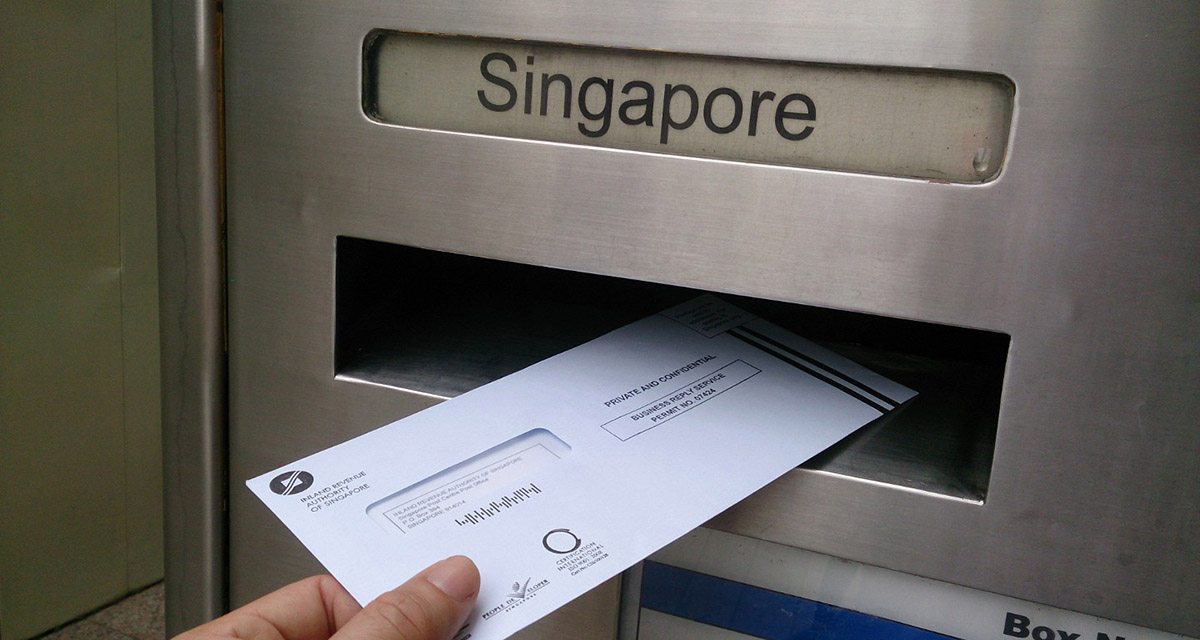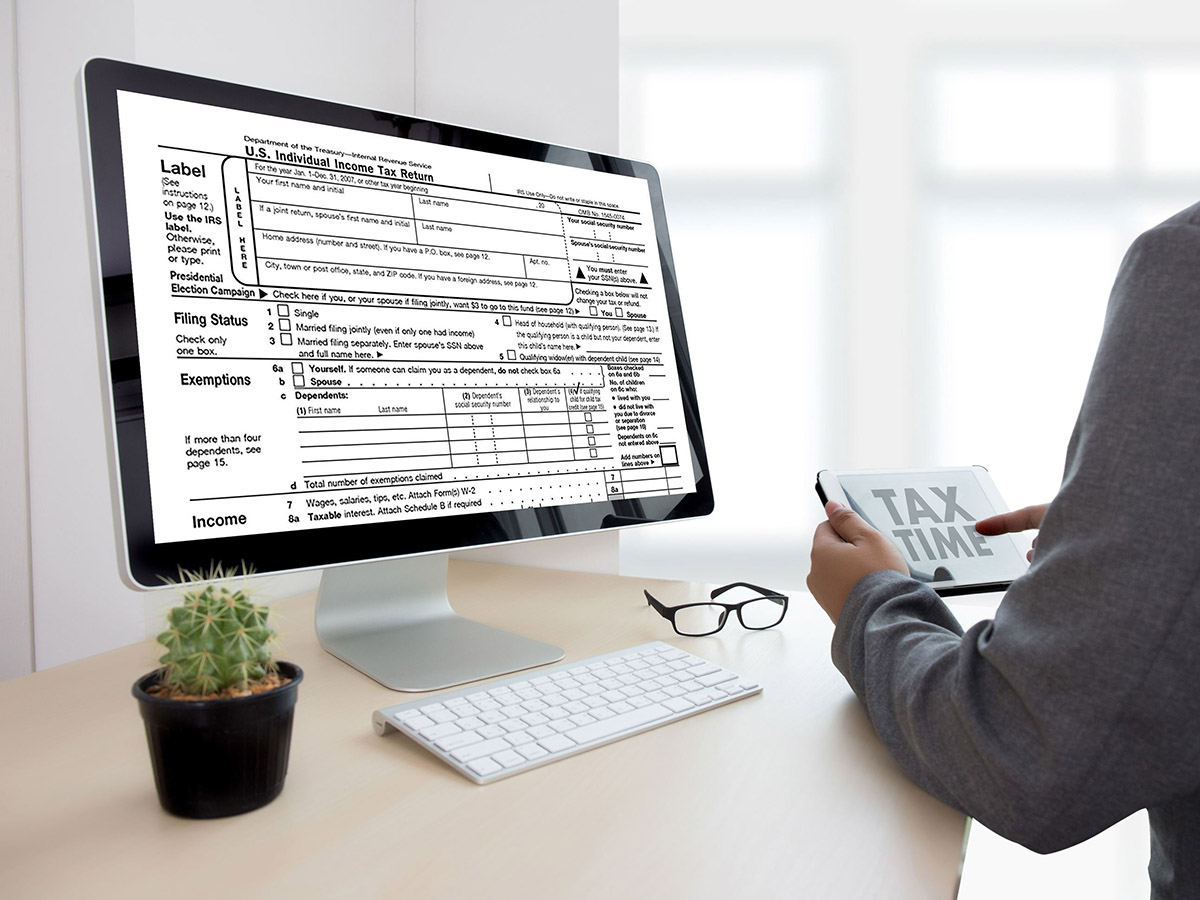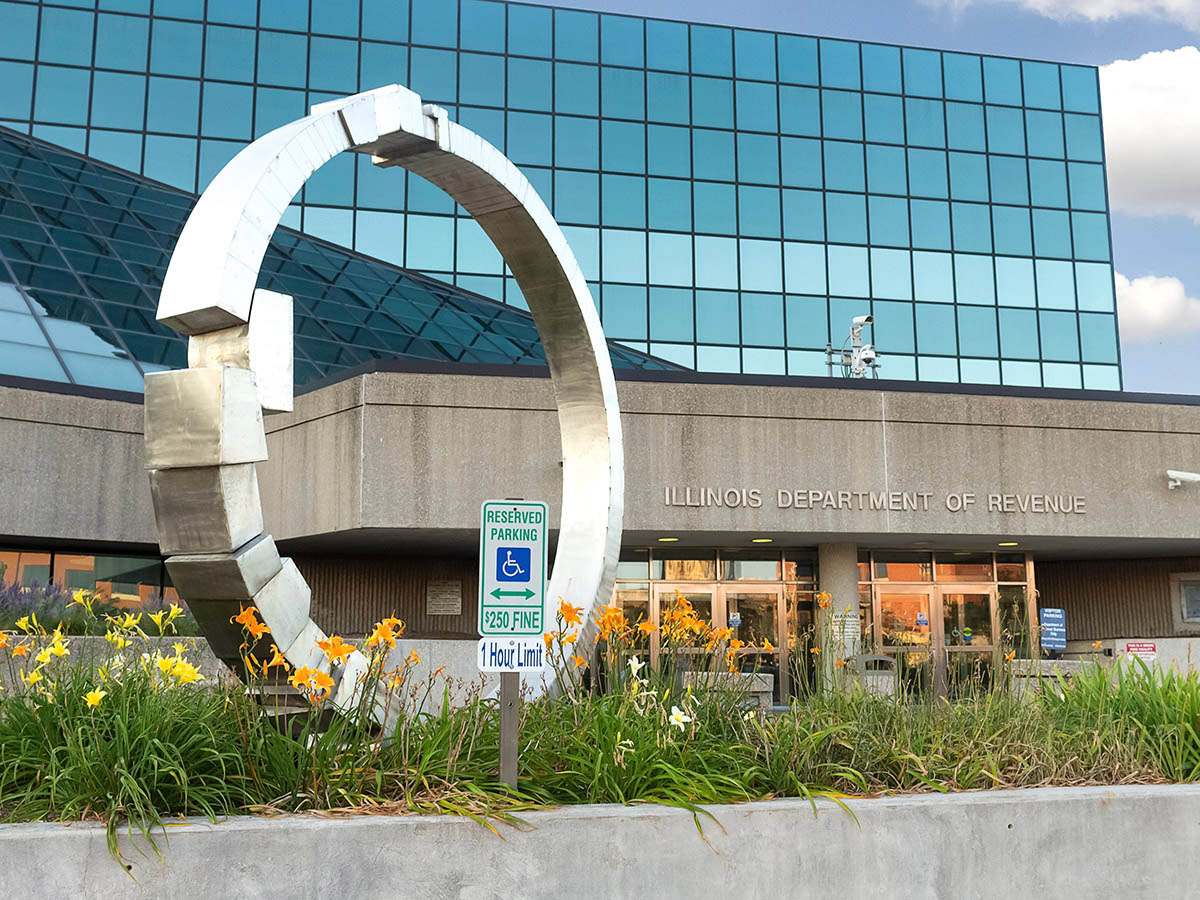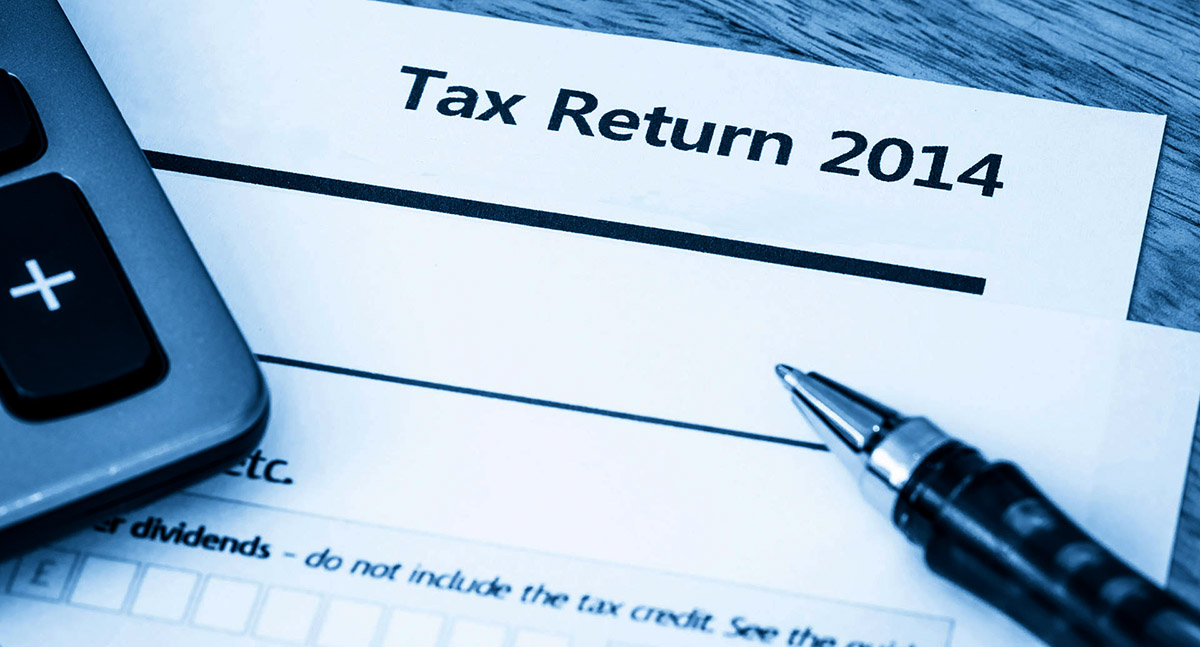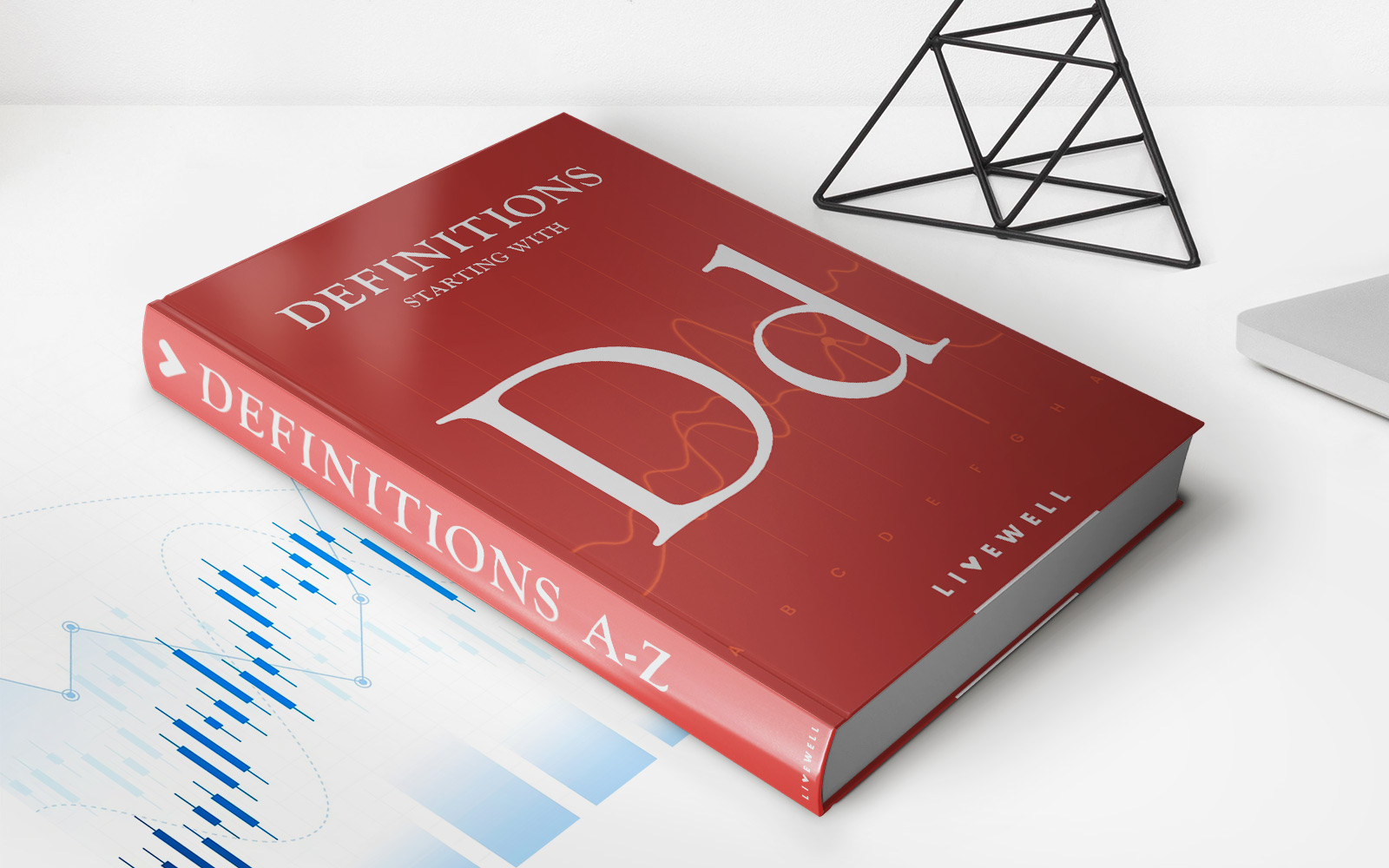

Finance
Where To Send Utah State Tax Return
Published: October 29, 2023
Looking for information on where to send your Utah state tax return? Find out the proper mailing address and ensure your finance documentation is submitted correctly.
(Many of the links in this article redirect to a specific reviewed product. Your purchase of these products through affiliate links helps to generate commission for LiveWell, at no extra cost. Learn more)
Table of Contents
Introduction
Welcome to the world of tax returns! As a resident of Utah, it’s important to know the correct procedure for filing your state tax return. Whether you prefer the traditional pen-and-paper method or the modern electronic filing option, this article will guide you through the process and help you ensure that your return is submitted accurately and on time.
Filing your state tax return may seem like a daunting task, but with the right information, it can be a smooth and hassle-free experience. By understanding the various options available to you, you can choose the method that suits your needs and preferences.
In this article, we will cover the different filing options that Utah residents have, including mailing address for paper returns, electronic filing options, online filing through the Utah State Tax Commission, and using tax software or paid preparers. We will also explore payment and refund options to make your tax season a little less stressful.
Whether you are a seasoned taxpayer or filing for the first time, this comprehensive guide will provide you with the knowledge you need to navigate the Utah state tax return process.
Filing Options
When it comes to filing your Utah state tax return, you have several options to choose from. Each option offers its own advantages and considerations, so let’s explore them in more detail:
- Mailing Address for Paper Returns: If you prefer the traditional method of filing your tax return, you can opt to file a paper return. To do so, you will need to download the appropriate forms from the Utah State Tax Commission’s website. Once completed, you can mail your return to the designated address specified on the form. It’s important to double-check the mailing address to ensure that your return reaches the correct destination without any delays.
- Electronic Filing Options: Utah offers various electronic filing options to simplify the tax filing process. One option is to use the Utah State Tax Commission’s free online filing system, which allows you to file your return electronically directly on their website. This method is convenient and eliminates the need for paper forms and postage. Additionally, it often provides fast filing confirmation and quicker processing of your return.
- Online Filing through the Utah State Tax Commission: In addition to the free online filing system, the Utah State Tax Commission also partners with software vendors to provide approved online filing options. These software programs are designed to assist you in accurately completing your tax return and submitting it electronically. They often include helpful features such as error checking and calculations to ensure the accuracy of your filing.
- Tax Software or Paid Preparers: If you prefer to use tax software or enlist the help of a paid preparer, you have numerous options available. There are several reputable tax software programs on the market that can simplify the process by guiding you through the necessary steps and calculations. Alternatively, if you have a complex tax situation or prefer professional assistance, you can choose to have a paid tax preparer handle your Utah state tax return. Make sure to select a qualified preparer and provide them with all the necessary information to ensure accurate filing.
Regardless of the filing option you choose, it’s essential to keep accurate records of your income, deductions, and any supporting documents. This will help ensure that you report your income correctly and take advantage of all eligible deductions and credits.
Now that we have explored the various filing options available to Utah residents, let’s dive into more specific details for each option in the following sections.
Mailing Address for Paper Returns
If you prefer the traditional method of filing your Utah state tax return through paper, it’s important to know the correct mailing address to ensure your return is received and processed in a timely manner.
To begin, you will need to download the appropriate tax forms from the Utah State Tax Commission’s website. The specific forms you need will depend on your filing status and the nature of your income. Once you have completed the forms and double-checked their accuracy, it’s time to mail them to the designated address.
The mailing address for paper returns will vary depending on whether you are filing a full-year resident return, a part-year resident return, or a nonresident return. It’s crucial to use the correct mailing address to avoid any delays in processing your return.
To ensure that your paper return reaches the correct destination, the Utah State Tax Commission recommends using the following addresses:
- Full-Year Resident Returns: If you were a Utah resident for the entire tax year, the mailing address for your paper return is:
Utah State Tax Commission,
210 North 1950 West,
Salt Lake City, UT 84134-0266 - Part-Year and Nonresident Returns: If you were a Utah resident for only part of the tax year or if you were a nonresident with Utah source income, the mailing address for your paper return is:
Utah State Tax Commission,
210 North 1950 West,
Salt Lake City, UT 84134-0636
When preparing your paper return, it’s essential to include all necessary forms, schedules, and supporting documentation required for your specific situation. Ensure that your return is signed and dated before mailing it to the appropriate address.
Keep in mind that mailing your return often requires additional time for processing compared to electronic filing options. It’s advisable to send your paper return well in advance of the filing deadline to avoid any potential delays. Also, consider using certified mail or another traceable method to ensure that your return reaches its destination safely.
Now that you know the correct mailing addresses for paper returns, let’s explore the electronic filing options available to Utah residents in the next section.
Electronic Filing Options
If you prefer a faster and more convenient method for filing your Utah state tax return, electronic filing is the way to go. Utah offers several electronic filing options that allow you to submit your return digitally, eliminating the need for paper forms and snail mail. Let’s explore these options in more detail:
1. Utah State Tax Commission’s Free Online Filing System: The Utah State Tax Commission provides a free online filing system on their official website. This option allows you to electronically file your state tax return directly through their platform. To use this service, you will need to create an account, provide the required information, and follow the step-by-step instructions to complete your tax return. This method offers a convenient and straightforward way to file your return at no cost.
2. Online Filing through Approved Software: In addition to the free online filing system, the Utah State Tax Commission partners with approved software vendors to offer online filing options. These software programs are designed to assist you in preparing and electronically submitting your state tax return. They often provide features such as error checking, automated calculations, and the ability to import data from your federal return. Using approved software ensures that your return meets the necessary filing requirements and reduces the risk of errors.
3. Authorized e-File Providers: Utah also allows taxpayers to file their state tax return through authorized electronic filing service providers. These providers have been approved by the Utah State Tax Commission and offer secure and reliable e-filing services. You can find a list of authorized e-file providers on the Utah State Tax Commission’s website. Each provider may have its own interface and pricing structure, so be sure to choose one that best suits your needs.
Regardless of the electronic filing option you choose, these methods offer several advantages. They typically provide faster confirmation and processing of your return compared to mailing a paper return. Additionally, electronic filing helps reduce errors by performing automated checks on your return, ensuring accurate calculations and compliance with Utah’s tax laws.
Before filing electronically, it’s important to gather all the necessary information, including your income statements, deductions, and supporting documents. Make sure to review your return for accuracy before submitting it electronically. Take advantage of any features offered by the software or online filing system to review your return and correct any errors or discrepancies.
Now that we have explored the electronic filing options available to Utah residents, let’s move on to discuss the specific online filing option through the Utah State Tax Commission’s website.
Online Filing through Utah State Tax Commission
The Utah State Tax Commission provides an easy and convenient online filing option for residents to submit their state tax returns electronically. With this method, you can file your return directly through the Utah State Tax Commission’s website, saving time and eliminating the need for paper forms.
To begin the online filing process, you will need to visit the Utah State Tax Commission’s website and create an account. This account will allow you to securely access and complete your tax return. You will need to provide personal information such as your name, Social Security Number, and contact details to create your account.
Once you’ve created your account, you can proceed with entering your tax information. The online filing system will prompt you to provide details about your income, deductions, and any credits or exemptions you may be eligible for. The system will perform calculations and validations to ensure the accuracy of your return.
Throughout the online filing process, you will have the option to save your progress and return to it at a later time if needed. This allows you to gather all necessary information before completing and submitting your return. Saving your progress also enables you to review and double-check your entries for any errors or omissions.
After completing your tax return, you will have the opportunity to review it one final time before submitting it electronically. Take this time to make sure all information is accurate and complete. The online filing system may also provide suggestions for any missing or potentially eligible deductions or credits, helping you maximize your tax savings.
Once you are satisfied with your return, you can securely submit it electronically through the Utah State Tax Commission’s website. Upon successful submission, you will receive a confirmation that your return has been received. This confirmation serves as proof of filing and can be helpful if you need to reference it in the future.
It’s important to keep in mind that the online filing system is only available for full-year resident returns. If you are filing a part-year resident or nonresident return, you will need to explore other filing options such as using approved software or paper filing.
Using the online filing option through the Utah State Tax Commission offers several benefits. It provides a user-friendly interface, performs automatic calculations, and ensures you meet the necessary filing requirements. It also reduces the risk of errors and speeds up the processing of your return.
Next, let’s explore the option of using tax software or paid preparers to file your Utah state tax return.
Tax Software or Paid Preparers
If you prefer professional assistance or have a more complex tax situation, using tax software or hiring a paid tax preparer can be a beneficial option for filing your Utah state tax return. Both options can help ensure accuracy and provide valuable guidance throughout the filing process.
Tax Software: There are several reputable tax software programs available that can simplify the process of completing and filing your Utah state tax return. These software programs guide you through the necessary steps and calculations, helping you accurately report your income, deductions, and credits. They often feature error checking functionalities to catch any mistakes, ensuring the accuracy of your return. Tax software can be particularly useful if you have a relatively straightforward tax situation and prefer a DIY approach. Additionally, some tax software programs offer the ability to e-file your state tax return, providing a fast and secure method of submission.
Paid Preparers: If you have a complex tax situation or would like the peace of mind that comes with professional assistance, hiring a paid tax preparer can be a wise choice. A tax preparer is an individual or a tax preparation service that specializes in preparing tax returns. They have a deep understanding of tax laws and can help navigate through intricate tax situations. These preparers can help ensure that you are taking advantage of all eligible deductions and credits while accurately reporting your income. Paid preparers can also provide guidance on tax planning strategies to maximize savings in future tax years. When selecting a paid preparer, it’s important to choose someone who is qualified and experienced. Look for certifications such as Certified Public Accountant (CPA) or Enrolled Agent (EA), and consider recommendations or reviews from others who have used their services.
Whether you choose tax software or a paid preparer, it’s crucial to gather and organize all relevant documentation and financial records before starting the tax preparation process. This includes income statements, expense receipts, and any other supporting documents that may be necessary for your specific tax situation. Clear communication with your tax preparer or accurate data entry into the tax software is essential to ensure a comprehensive and accurate return.
It’s important to note that both tax software and paid preparers may involve certain costs. Tax software programs often have different pricing tiers based on the complexity of your return or additional features offered. Similarly, the fees for hiring a paid preparer can vary based on the complexity of your tax situation and the specific services provided. Consider your budget and the complexity of your tax return when deciding which option is the best fit for you.
Now that we have explored the options of using tax software or hiring a paid preparer, let’s move on to discuss payment options for your Utah state tax liability.
Payment Options
Once you have completed your Utah state tax return and determined the amount you owe, it’s time to consider the various payment options available to settle your tax liability. Having multiple payment options allows you to choose the method that is most convenient and works best for your financial situation. Let’s explore the different payment options for your Utah state taxes:
- Electronic Payment: The Utah State Tax Commission offers the convenience of electronic payment. You can make a secure payment directly from your bank account via electronic funds transfer (EFT). This method allows for quick and easy payment of your tax liability without the need for writing and mailing a check. To use electronic payment, you will need to provide your bank account information, including routing and account numbers, through the Utah State Tax Commission’s online payment portal. Make sure you have sufficient funds in your account to cover the payment.
- Credit or Debit Card: Utah accepts tax payments made with credit or debit cards. You can make the payment online or by phone, using a Visa, Mastercard, Discover, or American Express card. There may be a convenience fee associated with credit or debit card payments, so be sure to review the fee structure before selecting this option. The convenience fee is typically a percentage of the tax amount and is separate from the tax liability itself.
- Check or Money Order: If you prefer to make a traditional payment, you can mail a check or money order to settle your Utah state tax liability. Ensure that the payment is payable to the “Utah State Tax Commission” and include your Social Security Number or taxpayer ID on the payment. It’s important to use the correct payment voucher or reference your tax return information to ensure accurate and timely processing of your payment. Mail the payment to the address specified by the Utah State Tax Commission on their website.
- Cash Payment: In certain circumstances, you may be able to make a cash payment at an authorized payment location. This option is typically limited to taxpayers who do not have a bank account or cannot make an electronic payment. To find an authorized payment location, visit the Utah State Tax Commission’s website or contact their office for further assistance.
It’s important to remember that your tax payment must be submitted by the designated due date to avoid penalties and interest. The due date typically aligns with the deadline for filing your tax return, which is April 15th unless it falls on a weekend or a holiday. However, be sure to check the Utah State Tax Commission’s website or consult with a tax professional to confirm the specific due date for the tax year in question.
Lastly, it’s advisable to retain proof of payment, such as a transaction confirmation or a copy of the cancelled check, for your records. This proof will serve as documentation that you fulfilled your tax payment obligation.
Now that we have explored the various payment options for your Utah state tax liability, let’s move on to discuss the refund options available after you have filed your tax return.
Refund Options
After you have filed your Utah state tax return, you may be entitled to a refund if you overpaid your tax liability. It’s important to consider the different refund options available to ensure you receive your refund in the most convenient and efficient way possible. Let’s explore the refund options for Utah state taxes:
- Direct Deposit: The fastest and most secure way to receive your tax refund is through direct deposit. By providing your bank account information on your tax return, you enable the Utah State Tax Commission to directly deposit your refund into your bank account. This option typically results in faster access to your refund compared to receiving a paper check. Additionally, direct deposit eliminates the risk of a lost or stolen refund check.
- Check by Mail: If you prefer to receive a physical check, you can choose to have your tax refund mailed to you. The Utah State Tax Commission will mail the refund check to the address you provided on your tax return. However, it’s important to note that receiving a paper check can take longer than direct deposit, as it involves processing and mailing time. Ensure that your mailing address is correct to avoid any delays in receiving your refund.
- Refund Applied to Next Year’s Taxes: If you anticipate owing state taxes in the following year, you have the option to apply your refund as a credit towards next year’s tax liability. This can help offset future tax obligations. However, carefully consider this option and consult with a tax professional to ensure it aligns with your financial planning goals.
When filing your Utah state tax return, you will have the opportunity to select your preferred refund option. If you choose direct deposit, make sure to double-check your bank account information to ensure it is accurate. If you choose to receive a paper check, confirm that your mailing address is correct.
It’s important to remember that the timing of your refund may vary. The Utah State Tax Commission typically issues refunds within 90 days of receiving a complete and accurate tax return. However, factors such as the complexity of your return, processing times, and the demand for refunds during peak filing periods can affect the timing of your refund.
To check the status of your refund, you can use the “Where’s My Refund?” tool on the Utah State Tax Commission’s website. This tool allows you to track the progress of your refund and provides estimated timeframes for when you can expect to receive it.
Now that we have explored the different refund options for your Utah state tax return, let’s move on to discuss the important deadlines to keep in mind during the tax filing process.
Important Deadlines
When it comes to filing your Utah state tax return, it’s crucial to be aware of the important deadlines to avoid any penalties or late filing fees. Let’s explore the key deadlines to keep in mind:
- Filing Deadline: The deadline for filing your Utah state tax return aligns with the federal tax filing deadline, which is typically April 15th. However, if April 15th falls on a weekend or a holiday, the deadline is extended to the next business day. It’s important to note that requesting an extension for your federal tax return does not automatically extend the deadline for your Utah state tax return. To avoid penalties and interest, be sure to file your Utah state tax return by the designated deadline.
- Payment Deadline: Along with filing your tax return, it’s essential to pay any outstanding tax liability by the filing deadline. If you owe taxes and fail to make the payment by the deadline, you may incur penalties and interest charges. The payment deadline aligns with the filing deadline, typically April 15th, unless it falls on a weekend or a holiday. Ensure that your payment reaches the Utah State Tax Commission by the designated due date to avoid any penalties.
- Extension Deadline: If you need additional time to file your Utah state tax return, you can request an extension. The Utah state extension form is due by the original filing deadline (usually April 15th), and it provides an extension for filing your return until October 15th. It’s important to note that while an extension grants additional time to file, it does not extend the payment deadline. Any taxes owed must still be paid by the original deadline to avoid penalties and interest.
It’s important to stay organized and plan ahead to meet the filing and payment deadlines. Gather all necessary documents, such as income statements and deductions, well in advance to avoid last-minute rush and potential errors. Consider using tax software or consulting with a tax professional to ensure your return is prepared accurately and on time.
If you miss the filing deadline or fail to pay your taxes by the due date, penalties and interest may apply. These penalties and interest charges can accumulate over time, leading to additional financial burdens. It’s always best to file and pay your taxes promptly to avoid unnecessary expenses.
Now that you are aware of the important deadlines, it’s time to conclude our guide to filing your Utah state tax return.
Conclusion
Filing your Utah state tax return doesn’t have to be a daunting task. By understanding the filing options, deadlines, and payment and refund options available, you can navigate the process with confidence and ease.
In this comprehensive guide, we explored the different filing options, including mailing address for paper returns, electronic filing options, online filing through the Utah State Tax Commission, and using tax software or paid preparers. We also discussed the various payment options available to settle your tax liability and the different refund options for receiving your tax refund.
It’s important to be aware of the important deadlines to avoid penalties and fees. The filing deadline typically aligns with the federal tax filing deadline, and the payment deadline coincides with the filing deadline. Taking note of these deadlines and considering options for requesting an extension, if needed, can help ensure a smooth and timely tax filing process.
Remember to keep accurate records of all your tax-related documents and to review your return for accuracy before submitting it. Utilizing electronic filing options can provide faster processing and reduced chances of error, while using tax software or paid preparers can provide guidance and expertise for more complex tax situations.
Whether you choose to file your Utah state tax return through traditional paper forms, electronic filing options, or professional assistance, it’s essential to fulfill your tax obligations and meet the deadlines set by the Utah State Tax Commission.
We hope this guide has provided you with valuable information to successfully file your Utah state tax return. Remember to consult with the Utah State Tax Commission or a tax professional for specific questions or concerns related to your individual tax situation. Happy filing!

